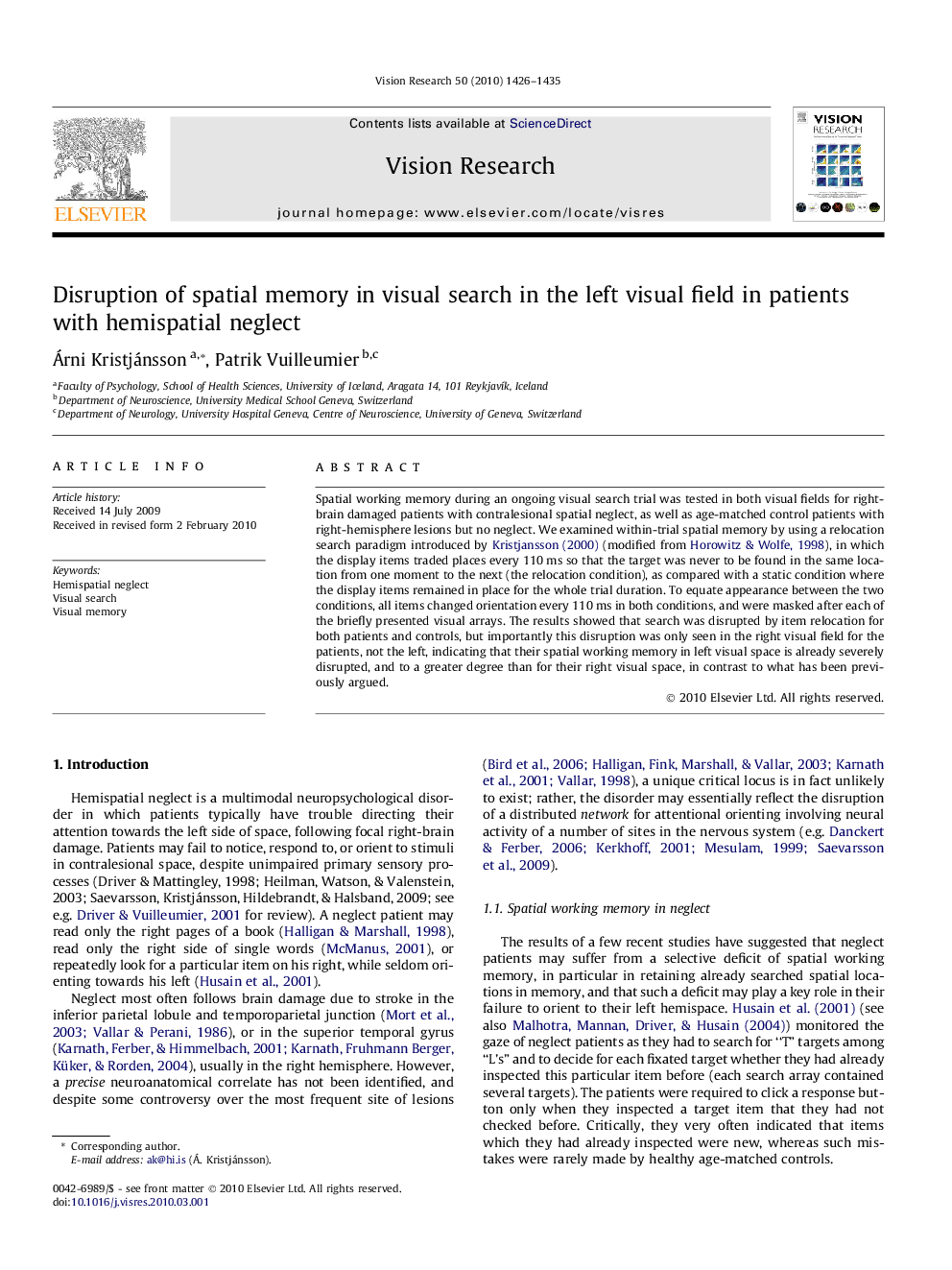| Article ID | Journal | Published Year | Pages | File Type |
|---|---|---|---|---|
| 4034476 | Vision Research | 2010 | 10 Pages |
Spatial working memory during an ongoing visual search trial was tested in both visual fields for right-brain damaged patients with contralesional spatial neglect, as well as age-matched control patients with right-hemisphere lesions but no neglect. We examined within-trial spatial memory by using a relocation search paradigm introduced by Kristjansson (2000) (modified from Horowitz & Wolfe, 1998), in which the display items traded places every 110 ms so that the target was never to be found in the same location from one moment to the next (the relocation condition), as compared with a static condition where the display items remained in place for the whole trial duration. To equate appearance between the two conditions, all items changed orientation every 110 ms in both conditions, and were masked after each of the briefly presented visual arrays. The results showed that search was disrupted by item relocation for both patients and controls, but importantly this disruption was only seen in the right visual field for the patients, not the left, indicating that their spatial working memory in left visual space is already severely disrupted, and to a greater degree than for their right visual space, in contrast to what has been previously argued.
